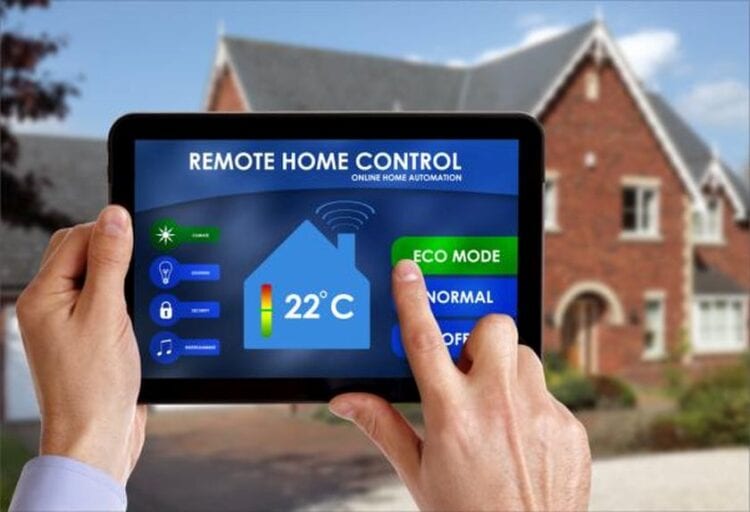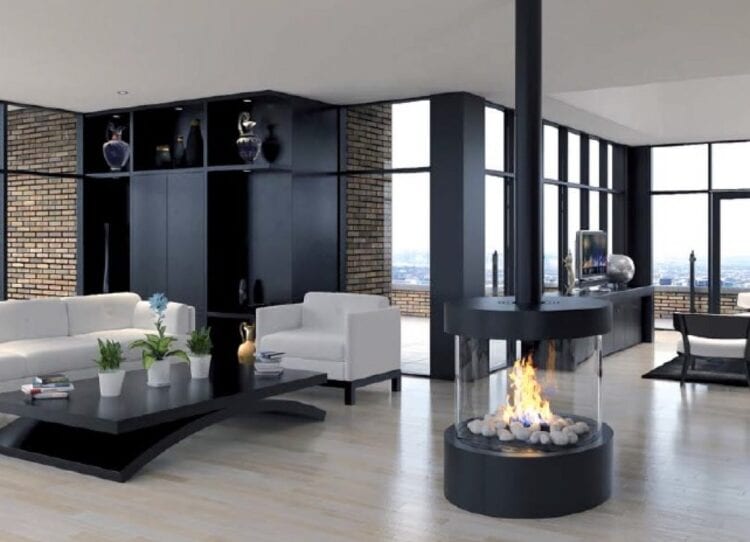How do you heat your home? If you asked a dozen households around the country this question, you’d likely get a variety of answers, ranging from oil and natural gas, to old steam radiators and wood-burning stoves. This is because standard utility services vary across the country, and older homes tend to use different heating styles than newer ones. Add to that concerns about sustainability and differing regional climates and it’s no wonder Americans rely on such a range of heating strategies. There’s something out there for every situation – but all those choices can be overwhelming if you’re considering renovating or upgrading your home’s heating system. How do you know what to choose?
Though most homes can be made comfortable with one of several different heating strategies, that doesn’t mean you’ll be equally happy with them. Before settling on a heating system, consider these 4 factors. By narrowing down your preferences, you can find the perfect setup for your needs.

Existing Structures
The first factor you should consider when choosing a home heating system is what type of systems and structures you already have in place. If you don’t have a gas line, for example, and can’t get one run to your home, you won’t be able to use a gas heating system. Or, if you have a fireplace, you may need to do some maintenance, such as hiring someone to clean your chimney, and supplement that with steam, oil, or gas heat elsewhere in your home.
Generally, any home can switch to electric or steam heat systems; every home needs a water heater and electricity, after all, but other options may be more challenging to implement if you’re planning a full system overhaul. If you’re not certain about whether a certain heating system is an option, consider reaching out to your local utility company.
Aesthetic Elements
Baseboard heating in its modern form has been around since the 1950s, but many older homes actually have radiators instead, and older baseboard-style heat is far more visually invasive than today’s flat baseboards, which are typically installed flush to the floor. And there’s a good reason that you don’t see many radiators or 1950s era baseboards, though, and it’s not because they’ve broken down. Rather, it’s because homeowners don’t like how they look. They prefer their heating systems be invisible or distinctive, not visually intrusive.
If aesthetics are a high priority in your choice of a heating system, there are several styles to consider. One option is a gas fireplace. Flexible in terms of placement because they’re easy to vent compared to a convention fireplace, you can install a gas fireplace insert from eFireplaceStore.com just about anywhere in your home. They also come in a range of styles, from classic fireplace designs to more modern looks. Though you would need several inserts placed throughout the home to meet your complete heating needs, they make an attractive supplement to gas baseboard heating.

Another option for the aesthetically-minded homeowner is central heating via built-in ductwork. This is hard to install since it involves major renovations, but it’s essentially invisible, making it the preferred option for those who want to emphasize other attributes of their home’s appearance.
Sustainability Concerns
Heating accounts for a huge amount of your home’s energy consumption, so it’s no surprise that finding sustainable heating options has become a top priority for many homeowners. The options for sustainable home heating are, however, relatively limited, with the leading options including solar power, geothermal heating, and passive heating. Each of these work a little differently, but overall can serve to reduce your home’s dependence on other types of energy.
Homes that use solar energy for heating typically have electric heating systems that run off of the power generated by rooftop solar panels. Others, however, use steam heat, with solar power supporting their furnace, and a third group using passive solar, in which direct sunlight heats the home through large windows and strategic design. Not all homes are designed or physically situated in ways that allow for the use of solar energy, however.
For those seeking a sustainable alternative to solar, the best choices are geothermal heating or wood pellet stoves. Geothermal heating uses ground source heat pumps that connect to an array of buried pipes and only use a small amount of energy; the system can be used for both heating and cooling. Wood pellet stoves, on the other hand, are very similar to traditional wood burning stoves, but they produce less pollution. They are highly efficient and a very popular option in rural areas.
Home Age

As noted above, older homes often have outdated baseboards or large radiators, and they’re often the hardest systems to renovate. That’s because the entire home’s infrastructure can limit your options, but that doesn’t mean there aren’t options. Mini-duct forced air systems, for example, can be used to heat older homes because the tubing used is very thin and can easily be positioned around internal framing without any major structural modifications. It’s also possible, with proper care, to transition older homes to radiant heat using hydroponic panels installed under the floorboards. Frank Lloyd Wright actually installed an early version of radiant heat in his Usonian houses, so the style is still in keeping with older structures.
If you do have an older home, it’s easy to write off bulky radiators, but don’t move too fast. Such heating units are distinctive and can add a lot of character to the space. If you’re unhappy with the current appearance of your radiators, a better alternative might be to invest in custom radiator covers. That allows you to make your radiators beautiful, integrated decor elements, rather than just functional intrusions.
Every home needs a reliable heating system, but their specific needs vary widely. A large home needs more disseminated heating than a very small one, and a home in a cold climate needs a system that can hold back sub-zero temperatures. While an expert can help you evaluate some of your home’s technical needs, you have to make choices about what you value. Whether that’s sustainability, appearances, or some other combination of traits, the array of heating options on the market is sure to include something that meets your needs.

